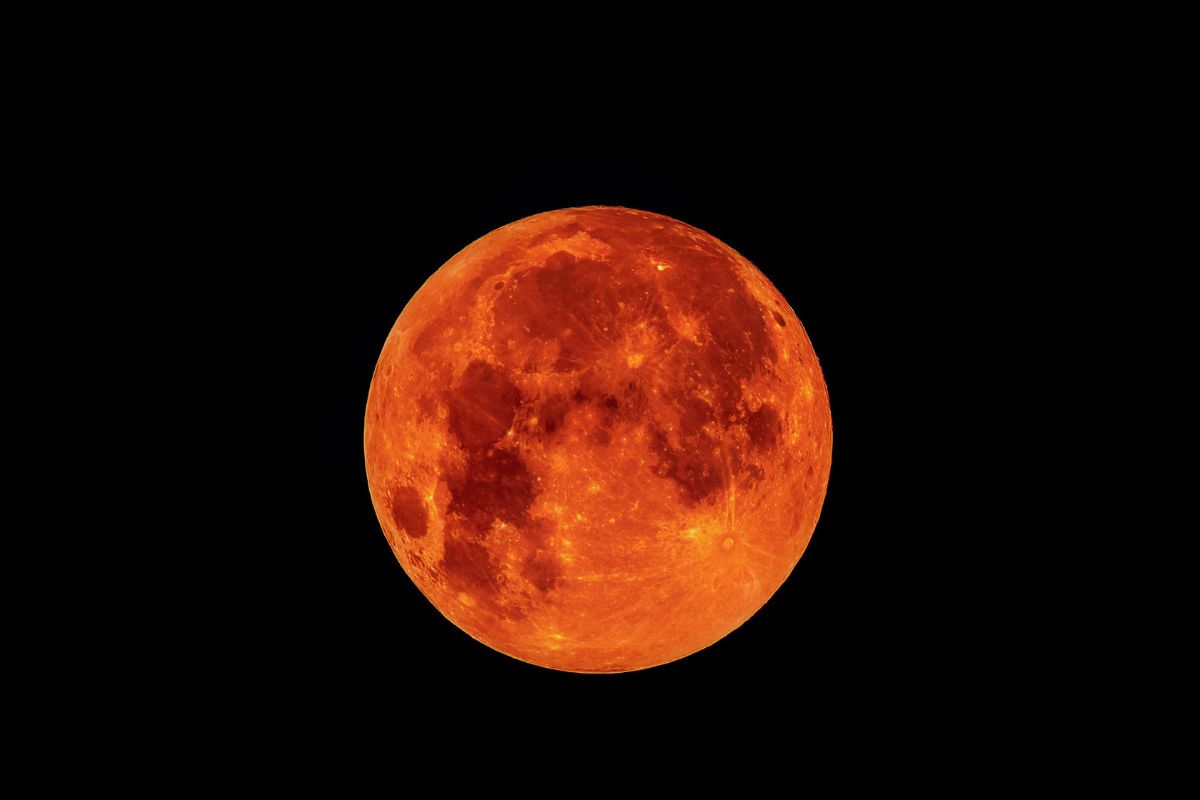
Ever wondered why a Blood Moon appears red? This celestial event, also known as a total lunar eclipse, transforms the moon into a stunning reddish hue. During a Blood Moon, the Earth aligns perfectly between the sun and the moon, casting its shadow over the lunar surface. The red color comes from sunlight filtering through Earth's atmosphere, scattering blue light and allowing red light to pass through. Blood Moons have fascinated humans for centuries, often linked to myths and legends. They occur roughly twice a year, making them rare yet predictable. From ancient superstitions to modern scientific understanding, Blood Moons continue to captivate skywatchers worldwide. Ready to learn more intriguing facts about this astronomical phenomenon? Let's dive in!
What is a Blood Moon?
A Blood Moon occurs during a total lunar eclipse when Earth's shadow completely covers the Moon. The Moon takes on a reddish hue due to the scattering of sunlight through Earth's atmosphere.
-
Red Color: The red color of a Blood Moon happens because of Rayleigh scattering, the same effect that causes sunsets to appear red.
-
Frequency: Blood Moons are rare, occurring about twice every three years.
-
Not Always Visible: Depending on your location, a Blood Moon might not be visible due to weather conditions or the time of day.
Historical Significance
Blood Moons have fascinated humans for centuries, often being linked to myths and legends.
-
Ancient Beliefs: Many ancient cultures saw Blood Moons as omens or messages from the gods.
-
Biblical References: The Bible mentions Blood Moons in the context of apocalyptic events.
-
Native American Legends: Some Native American tribes believed a Blood Moon signaled a time of change or transformation.
Scientific Explanation
Understanding the science behind a Blood Moon helps demystify this celestial event.
-
Earth's Shadow: A Blood Moon occurs when the Earth is directly between the Sun and the Moon, casting a shadow on the Moon.
-
Atmospheric Filtering: Earth's atmosphere filters out blue light, allowing only red light to reach the Moon.
-
Total Lunar Eclipse: A Blood Moon is a type of total lunar eclipse, but not all total lunar eclipses result in a Blood Moon.
Observing a Blood Moon
Observing a Blood Moon can be a thrilling experience for skywatchers.
-
Best Viewing Conditions: Clear skies and minimal light pollution offer the best viewing conditions for a Blood Moon.
-
No Special Equipment Needed: Unlike solar eclipses, you can safely view a Blood Moon with the naked eye.
-
Photography Tips: Use a tripod and a camera with manual settings to capture the best photos of a Blood Moon.
Blood Moon and Astrology
Astrologers often attribute special significance to Blood Moons.
-
Astrological Events: Some astrologers believe Blood Moons can influence human behavior and emotions.
-
Zodiac Signs: The impact of a Blood Moon is thought to vary depending on the zodiac sign it occurs in.
-
Personal Reflection: Many people use the time of a Blood Moon for personal reflection and setting intentions.
Fun Facts
Here are some fun and lesser-known facts about Blood Moons.
-
Wolf Moon: A Blood Moon occurring in January is sometimes called a "Wolf Moon."
-
Super Blood Moon: When a Blood Moon coincides with a supermoon, it's called a "Super Blood Moon."
-
Tetrad: A series of four consecutive Blood Moons is known as a "tetrad."
-
Cultural Festivals: Some cultures hold festivals or special events during a Blood Moon.
-
In Literature: Blood Moons have been featured in various works of literature, symbolizing everything from doom to romance.
The Magic of Blood Moons
Blood Moons are more than just a stunning sight in the night sky. They blend science, mythology, and culture in a way that captures our imagination. From ancient legends to modern-day astronomy, these lunar events have always fascinated humans. They remind us of the universe's vastness and our small place within it.
Whether you're a stargazer or just curious, witnessing a Blood Moon can be a memorable experience. So next time you hear about one, grab a telescope or just step outside. You might find yourself pondering the mysteries of the cosmos.
Blood Moons are a reminder that there's always something new to learn and marvel at. Keep looking up, and who knows what other celestial wonders you'll discover.
Was this page helpful?
Our commitment to delivering trustworthy and engaging content is at the heart of what we do. Each fact on our site is contributed by real users like you, bringing a wealth of diverse insights and information. To ensure the highest standards of accuracy and reliability, our dedicated editors meticulously review each submission. This process guarantees that the facts we share are not only fascinating but also credible. Trust in our commitment to quality and authenticity as you explore and learn with us.
